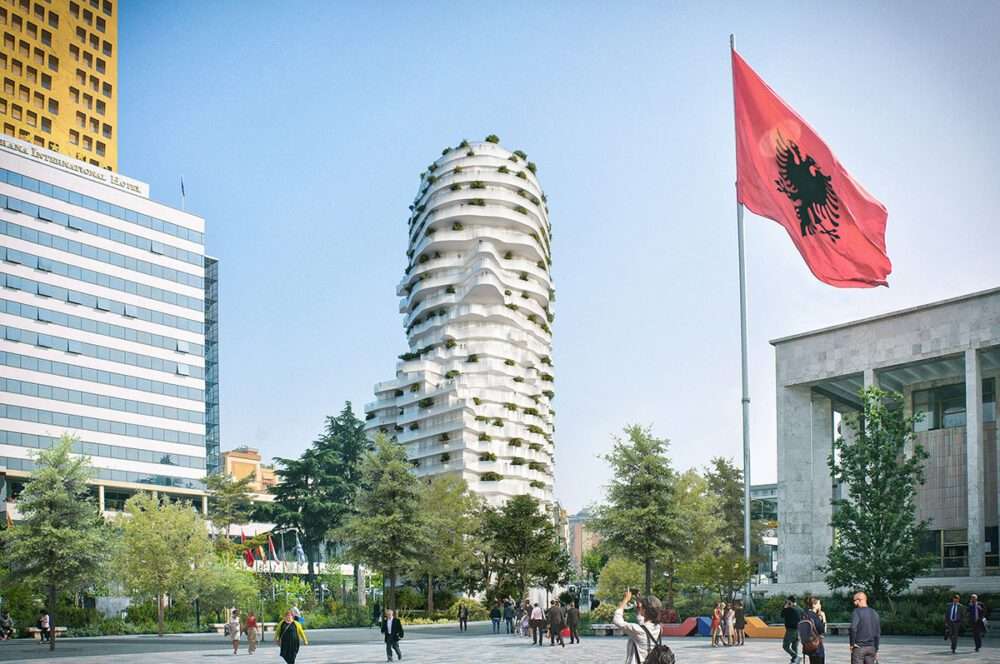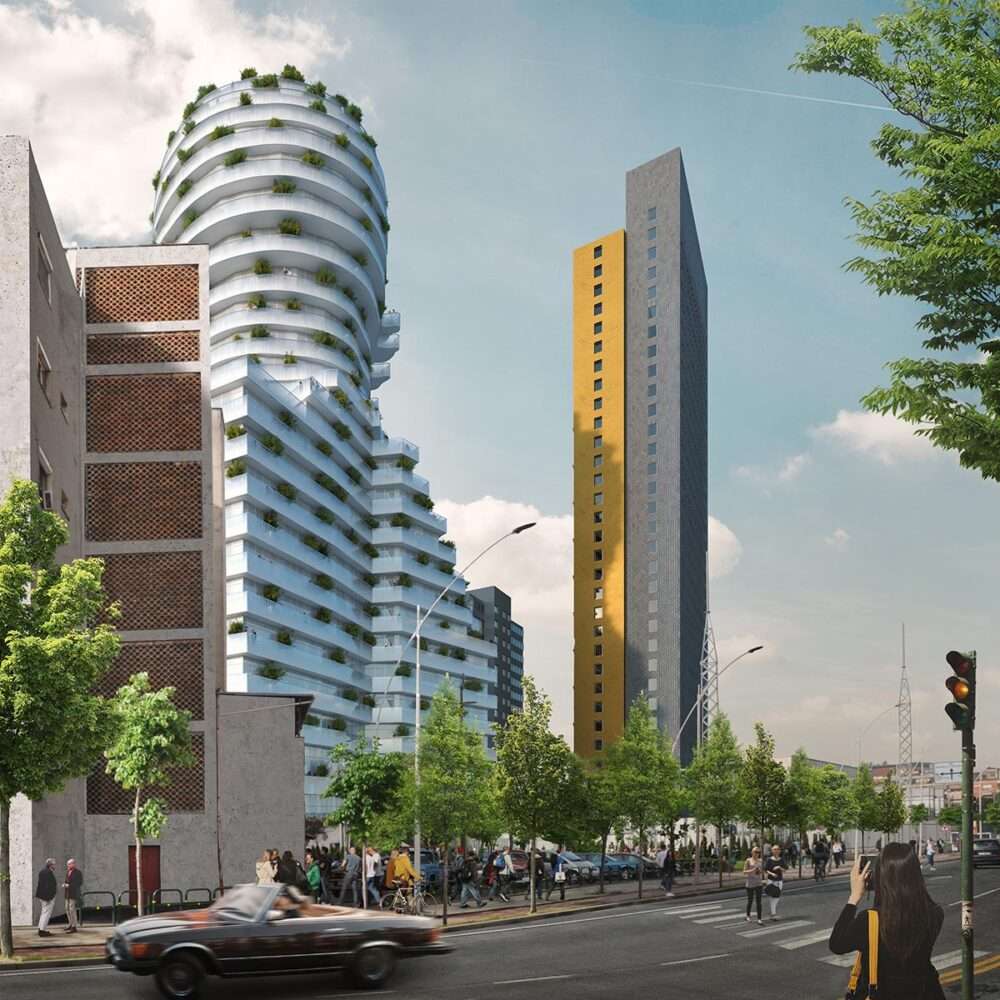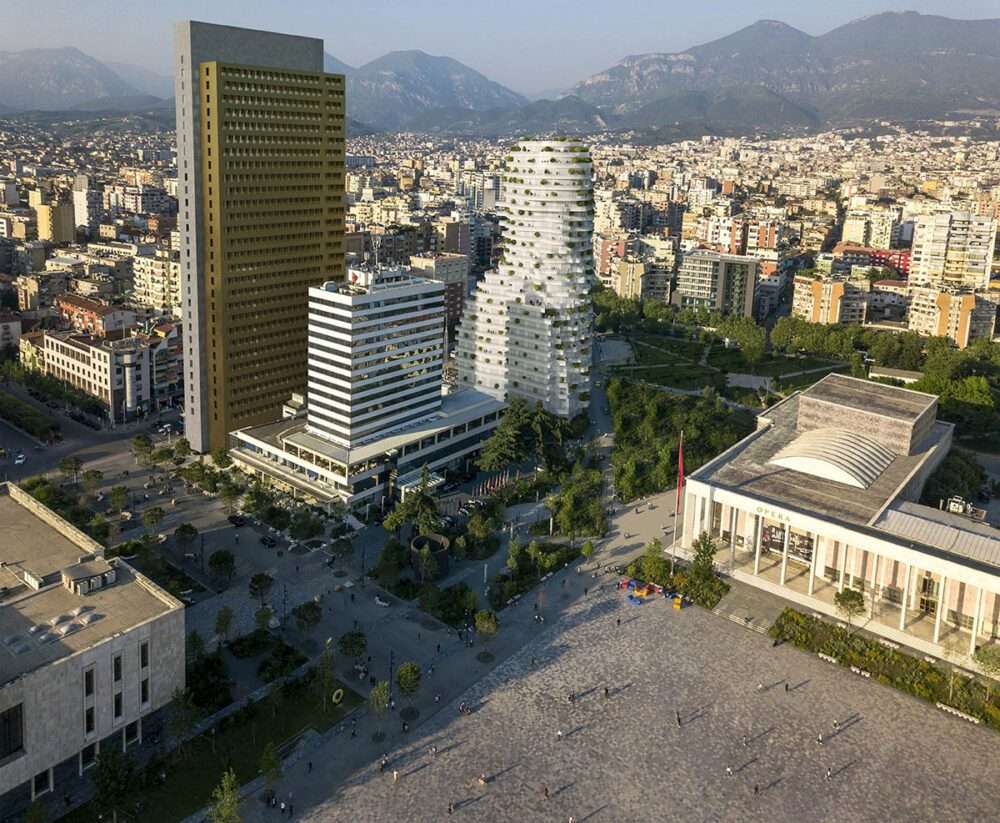MVRDV has sculpted a new mixed-use tower in the shape of a statue of Albania’s national hero,
Gjergj Kastrioti, in Tirana, Albania.
Named after the Skanderbeg Building (formally known as the Rock of Tirana),
It is an 85-meter-high mixed-use project sculpted in the shape of a bust of Albania’s national hero.
The new tower will be among the largest in the world that can be used as a figurative sculpture.

The tower is wrapped in arched balconies that form the shape of Skanderbeg’s head.
The building is intended to be a landmark in Skanderbeg Square, the center of Albania’s capital.
It celebrates and assimilates the country’s cultural history while giving Tirana a unique identity unmatched by any other capital city.
At the same time, behind its dramatic appearance, the building offers functional,
well-designed homes in one of the most desirable locations in all of Tirana.

Skanderbeg
Gjergj Kastrioti, more commonly known as Skanderbeg,
is a prominent and pivotal figure in the history of Albania,
and played a crucial role in its conception as a nation-state.
Kastrioti is known as the country’s national hero, and is specially honored as Skanderbeg Square.
The main public square in the center of Tirana, and the accompanying Skanderbeg Monument.

Located in the northeastern corner of the square,
it was designed by investors ANA sh.pk and VI&VI sh.pk and brought its presence to a whole new level.
At street level, the building fills the awkwardly shaped site right up to its edges.
And Skanderbeg’s head is “chiseled” from this maximum permissible size as a marble bust.

His shoulders are aligned with the widest part of the site, while his head is tilted to the right,
facing the square that bears his name.
The design achieves its unusual appearance by making use of balconies that wrap around the entire building on each level.
With curved protrusions that form facial details such as the nose, ears and beard.
These balconies allow the interior spaces of the building to adopt a more rational floor plan while providing a great deal of valuable shaded outdoor space for the building’s occupants.
The resulting effect is rather subtle; People may need to look twice to understand the shape of a building, depending on the angle they see it from.

This expressive approach fits seamlessly into a city that has developed a tradition of combining art and architecture as part of its post-communist renaissance.
Inside, the building has one level of commercial space and four levels of offices.
They are programs that can accommodate deep floor plans at the bottom of the “bust”.
For more architectural news


 العربية
العربية